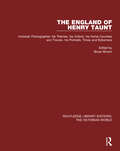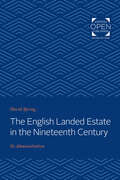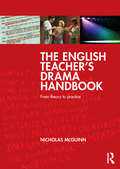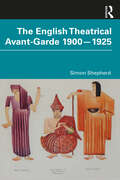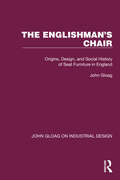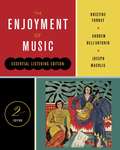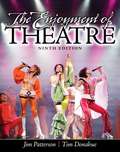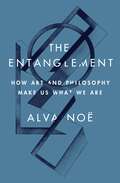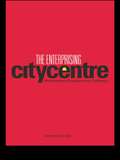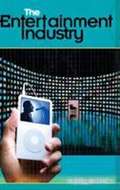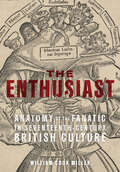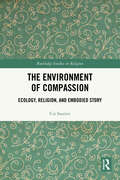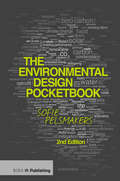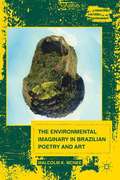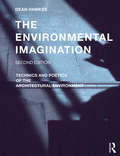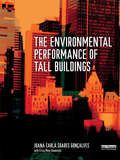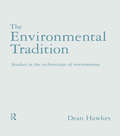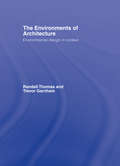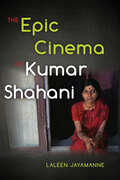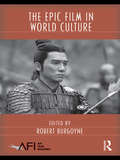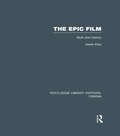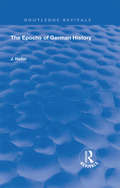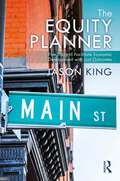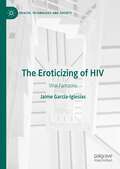- Table View
- List View
The England of Henry Taunt: Victorian Photographer: his Thames. his Oxford. his Home Counties and Travels. his Portraits. Times and Ephemera (Routledge Library Editions: The Victorian World #5)
by Bryan BrownHenry Taunt was one of the great photographers of the nineteenth and early twentieth centuries. He was a master of the camera and possessed of a profoundly creative sense of scene and composition. First published in 1973, this collection of Henry Taunt’s finest work includes artistic prints as well as images which are of importance to architectural and social historians. Sympathetically introduced and captioned by Bryan Brown, this book is a striking visual essay on the Victorian and Edwardian eras and a magnificent record of places and their past.
The English Castle: An Account of Its Development as a Military Structure
by A. Hamilton ThompsonOnce a seat of government as well as the private residence of its owners, the medieval castle was also a military base and stronghold for the surrounding geographical area. The development of these sturdy fortifications in England during the Middle Ages is carefully examined in this profusely illustrated book.From early chapters dealing with primitive earthworks and Roman stations, the text goes on to explore the construction of the English castle following the Norman Conquest, the beginnings of the stone castle and the Norman keep, bastions of the thirteenth century, military architecture, fortified towns in the later Middle Ages, and more.Students of architecture, military history, and medieval studies--as well as anyone interested in the evolution of castle construction--will find this work a fascinating and valuable reference.
The English Landed Estate in the Nineteeth Century: Its Administration
by David SpringOriginally published in 1963. The English Landed Estate in the Nineteeth Century: Its Administration deals principally with the administration of large landed estates during the years from 1830 to 1870. The book also throws new light on the work of the Inclosure Commissioners, who, as a department of the central government, supervised agricultural improvements made by landowners who borrowed from the government and from land companies. Author David Spring argues that the British government intervened in agriculture much more than is commonly thought. In describing the hierarchy of estate management, Spring relies, wherever possible, on hitherto unused family papers and estate documents. Especially important is his material on the Dukes of Bedford and on the domestic economy and financial position of the Russell Family. The chapter titled "The Landowner," based on the seventh Duke of Bedford's correspondence with his agent, is a case study of a single estate and provides insight into the workings of a great landowner's mind. The remaining chapters, dealing with lawyers, land agents, and the Inclosure Commissioners, include other individual portraits. Among these are Christopher Haedy, the Duke of Bedford's chief agent; James Loch, king of estate agents in nineteenth-century England; Henry Morton, the Earl of Durham's land agent; and William Blamire and James Caird, two of the Inclosure Commissioners.
The English Teacher's Drama Handbook: From theory to practice
by Nicholas McGuinnThe English Teacher’s Drama Handbook is a rich, thought-provoking introduction to teaching drama within the English classroom. Divided into two sections, the first part of the book explores deological influences that have shaped drama's relationship with English over the past 250 years and aims to help you locate your own practice within a theoretical and historical context. Starting with Rousseau's seminal text Emile, it considers the theories of key thinkers and practitioners and a range of complex issues including the construction of ‘childhood’, children’s play, the teacher and student relationship, the implications of linking drama and English and the impact of national curricula on drama and English teaching. The second half of the book offers a collection of comprehensive, practical schemes of work to inspire and support you and your students to realise the power of drama in bringing English language and literature vividly to life. Suitable for a range of ages and abilities, each activity makes explicit links to the key thinkers and issues explored in the first part of the book and explores a particular aspect of work in English - from grammar and spelling to poetry and play texts. Together with guidance on how to begin and progress the activities, each sequence includes ideas for exploring issues further in the English classroom. Written for English teachers at any stage of their career, The English Teacher’s Drama Handbook offers new ways of looking at drama and English that will ensure meaningful and enjoyable teaching and learning.
The English Theatrical Avant-Garde 1900-1925
by Simon ShepherdThe English Theatrical Avant-Garde, 1900–1925 unearths an extensive range of hitherto forgotten or ignored theatre practices. In doing so it reveals some of the well-known figures of the early twentieth-century English theatre in a strikingly new light. It fluently describes an intensity of innovation and experiment that together made the Edwardian theatre rather more radical, and rather more queer, than we’ve ever thought. Where the majority of writing on the early twentieth-century theatrical avant-garde is concerned with European movements and experiments, English activity of the period is often seen as parochial and conservative – mainly realism and issues-based drama. This book presents a new model of how avant-gardes might work; a model based not on masculine individualism but on communal inclusion. In describing this fascinating material, the author introduces us to many new figures and shows familiar ones in different ways: there’s Florence Farr, independent woman; Bob Trevelyan, radical pacifist and music drama pioneer; Granville Barker doing fairy plays while de-dramatising drama; Laurence Housman, socialist, homosexual, scripting St Francis; and the oddly modern J.M. Barrie. Together they made theatre practices rich in their diversity but consistent in their attempt to be new, producing a theatrical avant-garde unlike any other. This is a vital and indispensable new study for scholars and students of early twentieth-century theatre in England and beyond.
The Englishman's Chair: Origins, Design, and Social History of Seat Furniture in England
by John GloagOriginally published in 1964, The Englishman’s Chair is a history of English chairs, written as a continuous story from the 15th to the 20th Century and because of the revealing powers inherent in chair-making and design, it is also an unconventional footnote to English social history. The changes in taste, and fashion, the increase of skill, the introduction of new materials and the long battle between dignity and comfort are discussed, as is the impact that modern industrial designers have had on chair design.
The Enjoyment of Music: Essential Listening 2nd Edition
by Joseph Machlis Kristine Forney Andrew Dell'AntonioThe Enjoyment of Music: Essential Listening Edition offers instructors the flexibility to teach their course thematically or historically, and helps students acquire a lifelong interest in music. With Total Access, all the music and media resources students need are automatically included with every new copy of the text.
The Enjoyment of Theatre (Ninth Edition)
by Jim A. Patterson Tim DonohueBrings theatre to life for students by showing the relationship and relevance of the performing arts to their everyday lives The Enjoyment of Theatre's balanced coverage of performance and history provides a comprehensive and accessible introduction to theatre for both majors and nonmajors. This text establishes the aesthetic underpinnings of theatre art and then explores performance and production topics such as playwriting, acting, directing, design, and the theatre industry. The Enjoyment of Theatre also covers the full span of theatre's 2,500-year history. The authors make theatre come alive for students by showing them how theatre is relevant to their everyday lives. Learning Goals: Upon completing this book, readers will be able to: Understand today's theatre and the social impact of the theatre since its inception Explore theatre's cultural and economic context
The Entanglement: How Art and Philosophy Make Us What We Are
by Alva NoëWhy human nature is an aesthetic phenomenon—and why we need art and philosophy to understand ourselvesIn The Entanglement, philosopher Alva Noë explores the inseparability of life, art, and philosophy, arguing that we have greatly underestimated what this entangled reality means for understanding human nature.Life supplies art with its raw materials, but art, Noë argues, remakes life by giving us resources to live differently. Our lives are permeated with the aesthetic. Indeed, human nature is an aesthetic phenomenon, and art—our most direct and authentic way of engaging the aesthetic—is the truest way of understanding ourselves. All this suggests that human nature is not a natural phenomenon. Neither biology, cognitive science, nor AI can tell a complete story of us, and we can no more pin ourselves down than we can fix or settle on the meaning of an artwork. Even more, art and philosophy are the means to set ourselves free, at least to some degree, from convention, habit, technology, culture, and even biology. In making these provocative claims, Noë explores examples of entanglement—in artworks and seeing, writing and speech, and choreography and dancing—and examines a range of scientific efforts to explain the human.Challenging the notions that art is a mere cultural curiosity and that philosophy has been outmoded by science, The Entanglement offers a new way of thinking about human nature, the limits of natural science in understanding the human, and the essential role of art and philosophy in trying to know ourselves.
The Enterprising City Centre: Manchester's Development Challenge
by Gwyndaf WilliamsThe Enterprising City Centre reveals exemplars of local partnership working, the development and delivery of realistic implementation plans, and the range of instruments available to create both an improved quality to the urban environment and enhanced commercial and cultural competitiveness of our major city centres. That this was largely delivered in Manchester within a five year period of intensive development and renewal activity amply demonstrates the value of such experience for wider dissemination.
The Entertainment Industry
by Michael J. HaupertAimed at students and general readers, this text traces the historical evolution of entertainment as an economic entity in 20th-century America. The volume is organized roughly chronologically, and six representative types of entertainment are examined: vaudeville, recorded sound, movies, radio, television, and spectator sports. In the final chapter, Haupert (economics, U. of Wisconsin-LaCrosse) profiles 15 individuals who had a profound effect on the entertainment industry. Annotation ©2006 Book News, Inc. , Portland, OR (booknews. com)
The Enthusiast: Anatomy of the Fanatic in Seventeenth-Century British Culture
by William Cook MillerThe Enthusiast tells the story of a character type that was developed in early modern Britain to discredit radical prophets during an era that witnessed the dismantling of the Church of England's traditional means for punishing heresy. As William Cook Miller shows, the caricature of fanaticism here called the Enthusiast began as propaganda against religious dissenters, especially working-class upstarts, but was adopted by a range of writers as a literary vehicle for exploring profound problems of spirit, soul, and body and as a persona for the ironic expression of their own prophetic illuminations. Taking shape through the public and private writings of some of the most insightful authors of seventeenth-century Britain—Henry More, John Locke, the Third Earl of Shaftesbury, Mary Astell, and Jonathan Swift, among others—the Enthusiast appeared in various guises and literary modes. By attending to this literary being and its animators, The Enthusiast establishes the figure of the fanatic as a bridge between the Reformation and the Enlightenment, showing how an incipient secular modernity was informed by not the rejection of religion but the transformation of the prophet into something sparkling, witty, ironic, and new.
The Environment of Compassion: Ecology, Religion, and Embodied Story (Routledge Studies in Religion)
by Cia SautterThe Environment of Compassion explores questions of what it means to be in relationship to nature, if and how it is a religious experience, and how understanding humans as part of nature alters theology. The book offers a performance perspective that looks at ritual, dance, and theatre as a means of presenting discussion of sacred values in the public realm. The premise is that performance may serve as an effective means for developing human sacred values that recognize the more-than-human world, as it increases intersubjective awareness to address issues of social and environmental justice. The author investigates religion and theatre as a means of better understanding how eco-consciousness requires an aesthetic of the sacred. Rather than separate religion, culture, and nature, the book presents an aesthetic looking at the relationship between them. It considers how an embodied theatrical story might develop an inclusive community of compassion. Weaving the chapters together is an account of The Garden: A Refuge, an eco-centered play based on the biblical book of Job. Ecotheology, aesthetics, and embodiment theories are examined throughout, with scholarship and examples drawn largely from the Jewish tradition. The book is relevant to scholars of religion and theology, particularly those with an interest in the environment, as well as theatre, dance, and performance studies.
The Environmental Design Pocketbook
by Sofie PelsmakersThe Environmental Design Pocketbook 2nd ed places the information you need for sustainable, low energy building design at your fingertips. Packed with diagrams, tools and tips, it cuts through the complex mass of technical data and legislation that faces the designer, and distils all the key guidance into a single reference that is quick, easy to use and points to the facts, figures and performance data that are most important. This 2nd edition is now fully up-to-date with the latest Building Regulations Part L and F legislation (England and Wales), RIBA Plan of Work 2013, new information on the Green Deal and Zero Carbon and contains revised references and further reading sections throughout. Whether used in the classroom, office or on-site, the book guides the designer through the entire process; from the fundamentals to the building details. From future-proofing for a changing climate to rainwater harvesting, retrofit, and zero-carbon technologies - the Pocketbook has got it covered.
The Environmental Imaginary In Brazilian Poetry And Art
by Malcolm K. McneeThis study contributes to ongoing discussions on the connections between the environmental imaginary and issues of identity, place and nation. Utilizing a delimited ecocritical approach, McNee puts Brazilian culture, through the work of contemporary poets and visual artists, into a broader, transnational dialogue.
The Environmental Imagination: Technics and Poetics of the Architectural Environment
by Dean HawkesThe Environmental Imagination explores the relationship between tectonics and poetics in environmental design in architecture. Working thematically and chronologically from the eighteenth century to the present day, this book redefines the historiography of environmental design by looking beyond conventional histories to argue that the environments within buildings are a collaboration between poetic intentions and technical means. In a sequence of essays, the book traces a line through works by leading architects of the nineteenth and twentieth centuries that illustrate the impact of new technologies on the conception and realisation of environments in buildings. In this, a consideration of the qualitative dimension of environment is added to the primarily technological narratives of other accounts. In this second edition, the book has been substantially rewritten and restructured to include further research conducted in the decade since the first edition. A number of important buildings have been revisited, in order to extend the descriptions of their environments, and studies have been made of a number of newly studied, significant buildings. A completely new essay offers an environmental interpretation of Luis Barragán’s magical own house in Mexico City and the earlier studies of buildings by Peter Zumthor have been gathered into a single, extended essay that includes a body of new research. On the fiftieth anniversary of the publication of Reyner Banham’s, The Architecture of the Well-tempered Environment, the book concludes with a critical tribute to that seminal text. The Environmental Imagination will appeal to academics and practitioners with interests in the history, theory and technology of architecture.
The Environmental Performance of Tall Buildings
by Joana Carla GoncalvesTall buildings represent one of the most energy-intensive architectural typologies, while at the same time offering the high density work and living conditions that many believe will an important constituent of future sustainable communities. How, then, can their environmental impact be lessened? This insightful book takes in: an overview of the tall building and its impacts (looking at cityscape, place, mobility, microclimate, energy and economics) design principles and the development of the sustainable tall building global perspectives (covering North and South America, Europe, the Middle East and Asia) detailed, qualitative case studies of buildings in design and operation the future for sustainable tall buildings. Not simply another showcase for future utopian designs and ideals, the information presented here is based on hard research from operating buildings. Highly illustrated and combining analysis with solid detail for practice, this is essential reading for architects, building engineers, design consultants, retrofitters and urban planners interested in or working with tall buildings, and researchers/students in these disciplines.
The Environmental Tradition: Studies in the architecture of environment
by Dean Hawkes Dr Dean HawkesThis text brings together a unique collection of writing by a leading researcher and critic which outlines the evolution of the environmental dimension of architectural theory and practice in the past twenty-five years. It deals with the transformation of the environmental design field which was brought about by the growth of energy awareness in the 1970s and 1980s, and places environmental issues in the broader theoretical and historical context in architecture.
The Environments of Architecture: Environmental Design in Context
by Randall Thomas Trevor GarnhamThis well-illustrated 'think piece' provides a much needed and topical philosophical introduction to the place of environmental design in architecture. The Environments of Architecture sets out a range of considerations necessary to produce appropriate internal environments in the context of a wider discussion on the effect of building decisions on the broader environment. The authors, from architecture and engineering, academia and practice, provide a rounded and well-balanced introduction to this important topic. Starting from a belief that the built environment can contribute more positively to the planet and the pleasure of places as well as answering the practical demands of comfort, they cover site planning, form, materials, construction and operation as well as looking at design on a city level. Presenting a thoughtful and stimulating approach to the built environment, this book forms an excellent guide for practitioners, students and academics concerned with our built environment.
The Epic Cinema of Kumar Shahani
by Laleen JayamanneThe Epic Cinema of Kumar Shahani examines the major works of leading Indian film director Kumar Shahani and explores the reaches of modernist film aesthetics in its international form. More than an auteur study, Laleen Jayamanne approaches Shahani's oeuvre conceptually, as films that reveal cinema's synesthetic capabilities. As the author illustrates, Shahani's cinematic project entails a modern reformulation of the ancient oral tradition of epic narration and performance in order to address the contemporary world, establishing a new cinematic expression. As evidenced by his films, constructing cinematic history entails more than an archival project of retrieval and is a living history of the present, which can intervene in the current moment through sensory experiences.
The Epic Film in World Culture (AFI Film Readers)
by Robert BurgoyneWith the recent release of spectacular blockbuster films from Gladiator to The Lord of the Rings trilogy, the epic has once again become a major form in contemporary cinema. This new volume in the AFI Film Readers series explores the rebirth of the epic film genre in the contemporary period, a period marked by heightened and conflicting appeals to national, ethnic, and religious belonging.The orginal essays in this volume explore the tension between the evolving global context of film production and reception and the particular provenance of the epic as an expression of national mythology and aspirations, challenging our understanding of epics produced in the present as well as our perception of epic films from the past. The contributors will explore new critical approaches to contemporary as well as older epic films, drawing on ideas from cultural studies, historiography, classics, and film studies.
The Epic Film: Myth and History (Routledge Library Editions: Cinema)
by Derek ElleyAs Charlton Heston put it: ‘There’s a temptingly simple definition of the epic film: it’s the easiest kind of picture to make badly.’ This book goes beyond that definition to show how the film epic has taken up one of the most ancient art-forms and propelled it into the modern world, covered in twentieth-century ambitions, anxieties, hopes and fantasies. This survey of historical epic films dealing with periods up to the end of the Dark Ages looks at epic form and discusses the films by historical period, showing how the cinema reworks history for the changing needs of its audience, much as the ancient mythographers did. The form’s main aim has always been to entertain, and Derek Elley reminds us of the glee with which many epic films have worn their label, and of the sheer fun of the genre. He shows the many levels on which these films can work, from the most popular to the specialist, each providing a considerable source of enjoyment. For instance, spectacle, the genre’s most characteristic trademark, is merely the cinema’s own transformation of the literary epic’s taste for the grandiose. Dramatically it can serve many purposes: as a resolution of personal tensions (the chariot race in Ben-Hur), of monotheism vs idolatry (Solomon and Sheba), or of the triumph of a religious code (The Ten Commandments). Although to many people Epic equals Hollywood, throughout the book Elley stresses debt to the Italian epics, which often explored areas of history with which Hollywood could never have found sympathy. Originally published 1984.
The Epochs of German History (Routledge Revivals #18)
by J. HallerOriginally published in 1930. This book is not intended to be a discussion on German history, but to talk about its epochs, a period in which some fresh beginning is made, some fresh determining element enters, some event occurs to give a new direction to the course of history. The book is concerned with the critical moments of German history, the turning points in its course. Those are what we want to consider, wnd also to select as points of vantage from which we may survey the development of the German nation, viewing the panorama section by section.
The Equity Planner: Five Tools to Facilitate Economic Development with Just Outcomes
by Jason KingEconomic development is intended to benefit everyone in a community; however, in many cases, increased public and private investment can result in the pricing out and displacement of existing residents and businesses. How do we achieve more equitable outcomes? The Equity Planner provides a toolkit of practical solutions for planners and all those involved in placemaking to promote thoughtful, inclusive planning. Each chapter of The Equity Planner examines one particular aspect of inequity in the urban planning sphere, covering issues such as identity retention, affordability, and the protection and enhancement of local assets. While each chapter offers practicable solutions to these issues, the "Notes from the Field" sections describe how these same tools have been used (either successfully or unsuccessfully) in projects the author has been involved in, with a particular focus on the local resistance each project encountered. These real-world case studies are used to suggest methods to overcome such resistance, which the reader can then apply to their present initiatives. This book is written for urban planners, local activists, social scientists, policymakers, and anyone with an interest in equity planning. This book will be of use to both practicing and training urban planners and architects who seek to add equity planning to their professional repertoire.
The Eroticizing of HIV: Viral Fantasies (Health, Technology and Society)
by Jaime García-IglesiasThis book examines sexual fantasies and their influence on everyday life through the stories of twenty-two men who introduce themselves as bugchasers, i.e. gay men who eroticize HIV. The author defines bugchasing, charts its history and contexts, and considers how it has changed in the age of internet and PrEP. Through the participants, their experiences and contexts, this text also theorizes about sexual fantasies, seeking to understand how people define sexual fantasies and use the internet as a space to navigate their desires, meet others, and find support. Chapters also consider the practical implications of fantasy, most notably, how fantasies influence men’s decisions around HIV prevention and care. This book speaks to renewed interest in both the AIDS crisis and the sociology of everyday life to illustrate how fantasies such as bugchasing appear, evolve, and adapt. This book will be of interest to scholars focused on queer studies, sexuality studies, gender studies, and healthcare.
